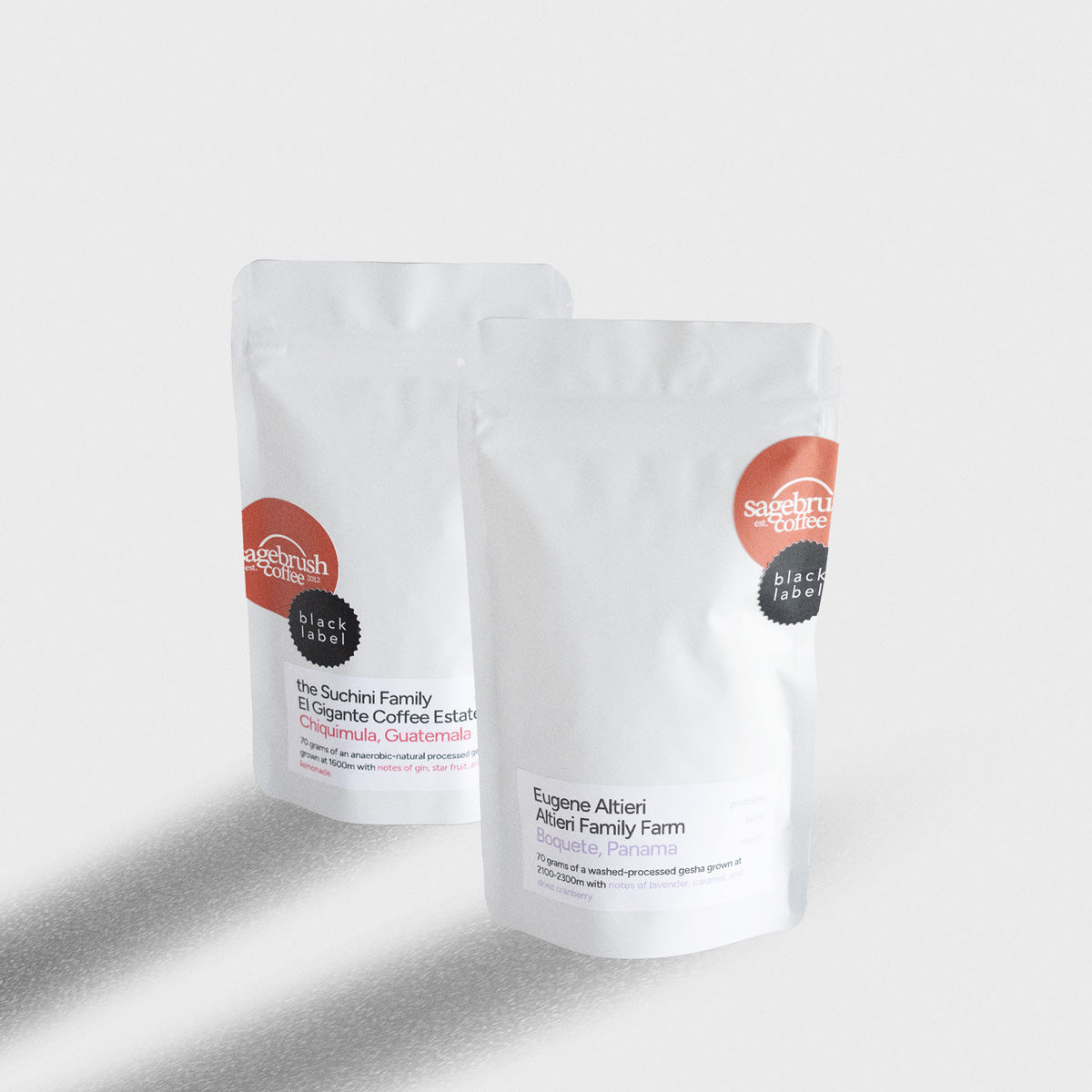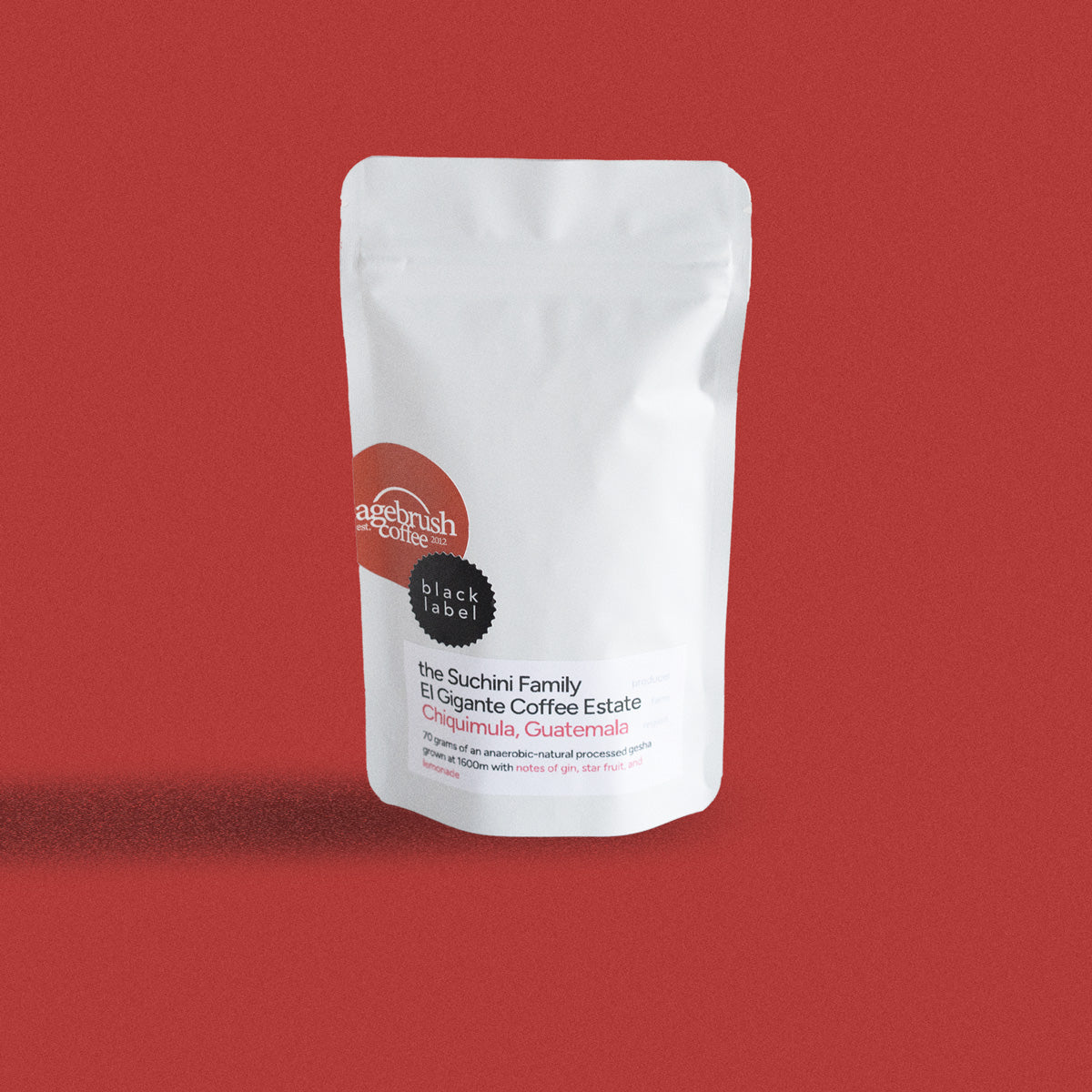
To talk about Pacamara and appreciate it for all it offers, we need to take one step back and talk about different coffee varieties. A variety is a specific plant used to grow coffee which gives it its genetic makeup. The most popular coffee varieties are Arabica and Robusta. Robusta grows in lower elevations, is a stronger seed, and can be produced in larger quantities than Arabica. Its quality is lower; it is higher in caffeine and it is enjoyed by many people worldwide. Arabica can only grow successfully in higher elevations and is the foundation for specialty coffee. Hybrids of both occur naturally, which has sent these two seeds in different directions. Today, we'll focus on the lineage of Arabica, although both originally came from Rubiaceae.
The Beginning of Arabica
All Arabica coffee started from Coffea Arabica; from there come dozens and dozens of other varieties. Some occur naturally, and some are developed in a lab. Arabica can sometimes be more delicate than Robusta. Arabica may also be more susceptible to disease and harder to grow. Because of this, some labs will try to cross a weaker Arabica with a strong Robusta to strengthen the seed and make it less vulnerable to disease. But, while Arabica may be harder to get large quantities of, it generally means the quality is much higher than Robusta. Nowadays, labs are getting more and more creative about crossing different varieties. They try to develop more flavors, but they also to try and strengthen the seeds to get higher yields of high-quality coffee.
Pacamara, How Did it Come to Be?
So now we know that since the Pacamara variety is an Arabica coffee, meaning it came from Coffea Arabica, but where did it go from there? From the Coffea Arabica, the Typica and the Bourbon varieties occurred. From the Typica, the Red Maragogipe would occur, and from the Bourbon variety, the Paca variety was born. The Paca and Maragogipe varieties would be crossed, resulting in the Pacamara. How's that for a word salad?
The Pacamara variety did not occur naturally. The Genetics Department of the Salvadoran Institute for Coffee Research (ISIC) began developing hybrids and in 1958 the cross between Paca and Maragogipe was successful, producing the Pacamara variety after approximately five tries. Even though Pacamara originated in El Salvador, the ISIC would distribute it to interested farmers all over Latin America, which is how we can offer a Pacamara variety from Colombia.
To give you a better picture of the genealogy of Pacamara, here's a brief explanation of each variety that played a role in its development.

Typica
Typica is the foundational seed of most Arabica Coffee. Its history can be traced back to the 15th and 16th centuries, and it's believed that it was first found in Ethiopia and then taken to Yemen. Typica plants would make their way around the world, and in the early 1700s, the plant was shared with the French. Around 1760 the Typica plant was discovered in Brazil, and by the 1800s, it was found all over Central and South America.
Red Maragogipe
Red Maragogipe It is a mutation of Typica and was first discovered in the Maragogipe province of Bahia, Brazil. It's known for being larger in size and is sometimes referred to as Arabica coffee's giant. The tree is tall, the leaves are large, and so are the cherries. It doesn't yield as much as other coffee plants, but the quality is notable. It makes sense that the Pacamara bean would be more prominent in size when it comes from the Red Maragogipe.
Bourbon
The Bourbon variety is also a foundational plant to many of today's coffee varieties. It's a mutation discovered by the French on the island of Bourbon, which is just off the coast of Madagascar. Now that genetic testing is more widely available, the origin of tree plants is easier to pinpoint. There are many hybrids of Bourbon, and it's known for not being as strong as Typica and is more susceptible to disease. If you're familiar with coffee varieties, Mundo Novo and Caturra are among the most popular descendants of the Bourbon.
Paca
Paca is a natural mutation of the Bourbon coffee variety. The Paca plant is known for being smaller in size, which results in higher yields because they can be planted closer together than taller plants. It was discovered in 1949 on a farm owned by the Pacas family in the Santa Ana region of El Salvador. In 1960, the Salvadoran Institute for Coffee Research (ISIC) began a program of selecting the best Paca seeds and helped to distribute them throughout El Salvador and other parts of Central and South America. Today, the Paca variety accounts for roughly about 25% of El Salvador's coffee production.
At Sagebrush, we take learning pretty seriously. We like to know as much as possible about the origin of the coffee we offer. Curiosity about the origin of coffee has led us to build solid relationships with farms so we can directly offer coffee to our customers. When we know more about cultivating, processing, and even shipping, we can discern with more exactness which coffee truly is the best. Whether it's the Altierri farm in Panama or El Injierto in Guatemala, we pride ourselves on our voracious desire to learn and grow in our coffee expertise. The more we know, the better we can appreciate and understand the hard work of producers and the better offerings we can provide to our customers.

















